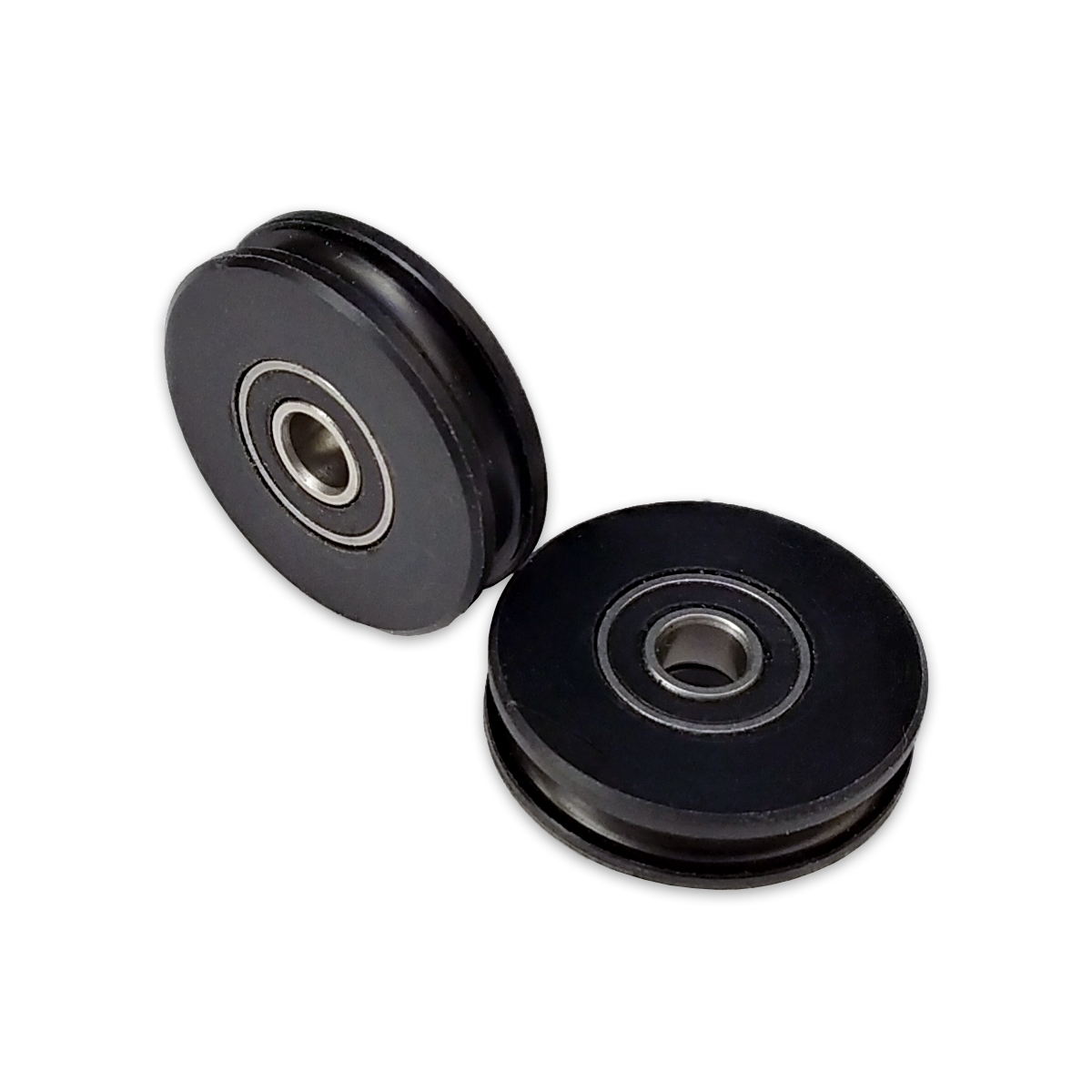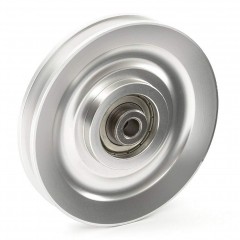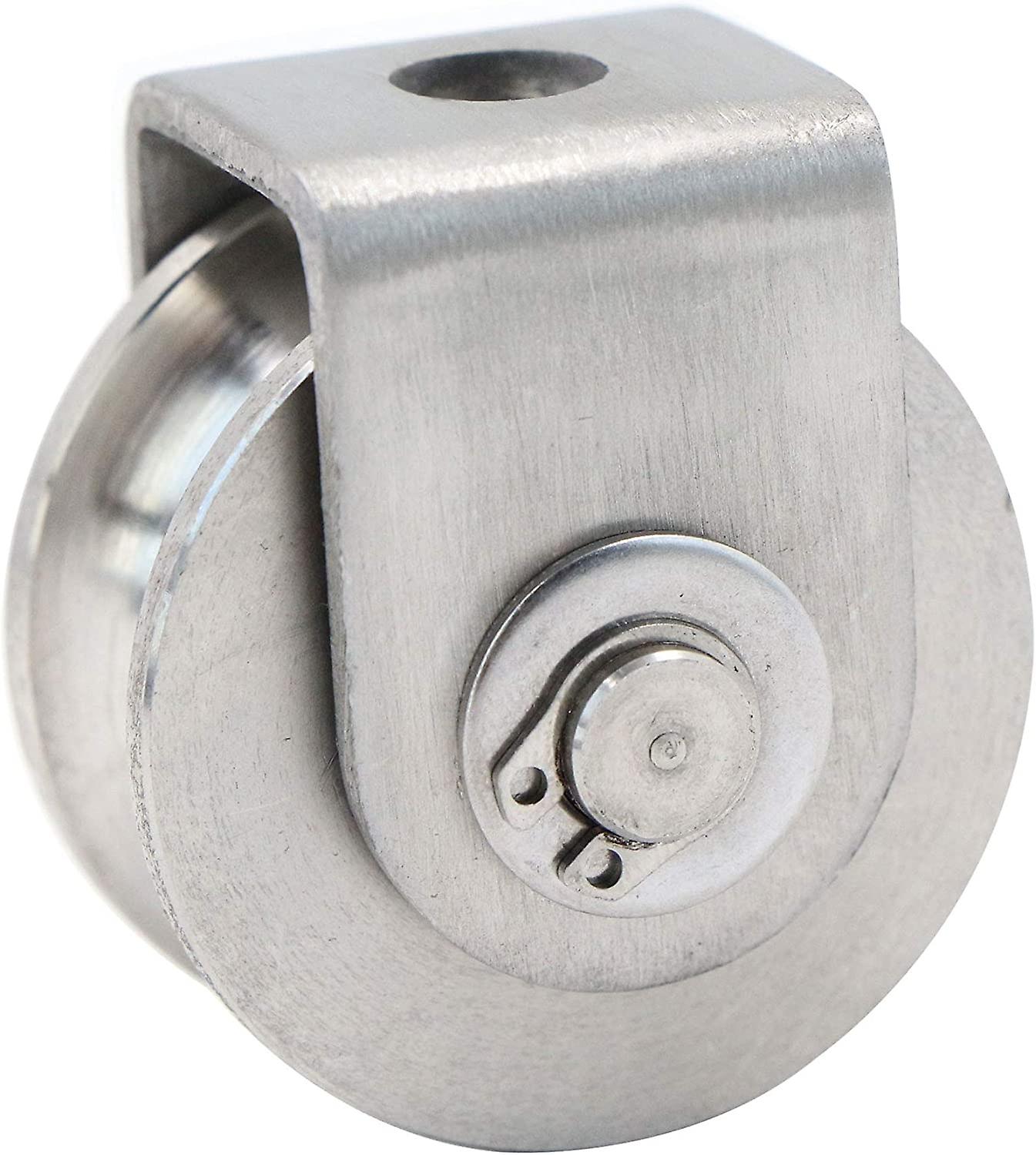Product Description
CONVEYOR IDLER / ROLLER / PULLEY
Conveyor idler takes a big role in the belt conveyor system. Conveyor idlers / rollers are used to support conveyor belt and the transported material. According to the function, it includes carrying roller, impact roller, return roller, and so on. With the material, steel, nylon, ceramic, pvc are available. Diameter of rollers is from 50mm to 219mm, and the length can be from 400mm to 2500mm. Colors for options include red, yellow, green, black, etc.
. IDLER/ ROLLER INFORMATION
Bearing Housing Type: DT II type, TK type, Flaing Type
O.D. of Bearing Housing: 60mm – 219mm ( 60, 76, 89, 101.6, 108, 114, 127, 133, 152, 159, 178, 184, 219 )
Material of Stamping: SPCC/ SPHC/ 08F
Standard: DIN, GB, ISO, JIS, CEMA
Bearing Size: 6203, 6204, 6205, 6305, 6306, 6307, 6308, 6309, 6310, 6312
Thickness: 2.0mm, 2.5mm, 3.0mm, 3.5mm, 4.0mm, 5.0mm, 6.0mm
Material of Seal: Nylon 6 / POM
. IDLER ASSEMBLING DIAGRAM
. TK III TYPE COMPONENTS DIAGRAM.
. IDLER PRODUCTION PROCESS
. Bearing Housing and Rubber Seal
Other Components
PACKING MEANS
| Material: | Steel |
|---|---|
| Application: | Grain Transportation, Mining Transport, Power Plant |
| Structure: | Forward Roller |
| Bearing Type: | Double Sealed Bearing |
| Type: | Impact Idler |
| Bearing Model: | 6204, 6205, 6305, 6305, 6306, 6308 |
| Samples: |
US$ 0.1/Piece
1 Piece(Min.Order) | |
|---|
| Customization: |
Available
| Customized Request |
|---|

What are some real-world examples of roller pulley applications in logistics and manufacturing?
Roller pulleys find extensive applications in logistics and manufacturing industries due to their versatility and efficiency in material handling. Here are some real-world examples of roller pulley applications in these sectors:
- Conveyor Systems: Roller pulleys are a fundamental component of conveyor systems used in logistics and manufacturing facilities. They facilitate the movement of materials along the conveyor belts, allowing for efficient transportation, sorting, and distribution of goods. Conveyor systems equipped with roller pulleys are employed in various settings, including warehouses, distribution centers, airports, production lines, and e-commerce fulfillment centers.
- Packaging and Sorting: Roller pulleys play a crucial role in packaging and sorting operations. They are used in automated packaging lines to transport products from one station to another, facilitating the packaging process. Roller pulleys with specialized features, such as tapered rollers or diverter rollers, are employed in sorting systems to accurately divert or merge items based on predefined criteria, improving the speed and accuracy of order fulfillment.
- Pallet Handling: Roller pulleys are utilized in pallet handling applications, where palletized goods need to be transported, loaded, or unloaded. Pallet conveyors equipped with roller pulleys enable the smooth movement and positioning of pallets, ensuring efficient loading and unloading operations in warehouses, distribution centers, and manufacturing facilities.
- Assembly Lines: Roller pulleys are integrated into assembly lines to facilitate the movement of components or products during the manufacturing process. They enable the smooth flow of materials between workstations, allowing for efficient assembly, testing, or inspection operations. Roller pulleys contribute to the overall productivity and throughput of assembly lines by minimizing manual handling and optimizing material flow.
- Automated Material Handling: Roller pulleys are essential in automated material handling systems, where robotics and advanced technologies are employed. They are used in conjunction with robotic arms or automated guided vehicles (AGVs) to transport materials within a facility. Roller pulleys ensure precise movement and positioning of materials, enabling seamless integration between automation systems and conveyor networks.
- Warehousing and Distribution: Roller pulleys are widely utilized in warehousing and distribution operations. They are employed in conveyor systems for efficient loading and unloading of trucks, cross-docking operations, order picking, and inventory management. Roller pulleys increase the speed and accuracy of material flow within warehouses and distribution centers, enhancing overall operational efficiency.
These are just a few examples of roller pulley applications in logistics and manufacturing. The versatility and adaptability of roller pulleys make them integral to a wide range of material handling processes, contributing to improved efficiency, productivity, and automation in these industries.

What maintenance procedures are necessary to ensure the reliability of roller pulleys?
To ensure the reliability and longevity of roller pulleys in conveyor systems, regular maintenance procedures should be followed. Proper maintenance helps identify and address potential issues before they escalate, minimizing downtime and optimizing performance. Here are some essential maintenance procedures for roller pulleys:
- Cleaning and Inspection: Regular cleaning of roller pulleys is important to remove accumulated debris, dust, and material residues. Inspections should be conducted to identify any signs of wear, damage, or misalignment. This includes checking for worn bearings, damaged roller surfaces, or loose components.
- Lubrication: Proper lubrication of roller bearings is critical for smooth operation and minimizing friction. Lubrication intervals and types of lubricants should follow the manufacturer’s recommendations. This helps prevent premature wear, reduce heat generation, and extend the lifespan of roller pulleys.
- Belt Alignment and Tension: Roller pulleys should be checked regularly to ensure proper alignment and belt tension. Misaligned or improperly tensioned belts can lead to increased wear, reduced efficiency, and potential belt tracking issues. Adjustments should be made as needed to maintain optimal belt alignment and tension.
- Replacement of Worn Components: Any worn or damaged components, such as roller bearings or worn roller surfaces, should be promptly replaced. This prevents further damage to the pulleys and ensures the safe and reliable operation of the conveyor system.
- Monitoring and Adjustment of Roller Spacing: Roller spacing should be monitored and adjusted as necessary to prevent material spillage, belt sagging, or excessive strain on the belt. Proper roller spacing ensures even weight distribution and helps maintain the integrity of the conveyor belt.
- Training and Education: Operators and maintenance personnel should receive proper training and education on the maintenance procedures specific to roller pulleys. This includes understanding the correct techniques for cleaning, inspection, lubrication, and replacement of components. Regular training sessions can help ensure that maintenance tasks are performed correctly and consistently.
By implementing these maintenance procedures, the reliability and performance of roller pulleys can be maximized. Regular cleaning, inspection, lubrication, and timely replacement of worn components contribute to the smooth operation of conveyor systems, preventing costly breakdowns and minimizing downtime.

How does the design of rollers on a roller pulley impact its performance?
The design of rollers on a roller pulley plays a crucial role in determining its performance and effectiveness in conveyor systems. Various design factors can impact the performance of rollers. Here are some key aspects to consider:
- Roller Material: The choice of roller material affects factors such as durability, friction, and resistance to wear. Common materials used for rollers include steel, stainless steel, plastic, and rubber. Each material has its own advantages and suitability for specific applications.
- Roller Diameter: The diameter of the roller affects the contact area with the conveyor belt. Larger diameter rollers distribute the load over a larger surface area, reducing the pressure on the belt and minimizing the risk of belt damage. Smaller diameter rollers, on the other hand, may be suitable for applications with limited space or for conveying smaller materials.
- Roller Surface: The surface of the roller should be designed to reduce friction and promote smooth material movement. It should be smooth, free from sharp edges or protrusions that could damage the conveyor belt. Additionally, certain surface patterns or coatings can enhance grip and prevent material slippage.
- Roller Bearings: The type and quality of roller bearings are critical for smooth rotation and longevity of the roller pulley. High-quality bearings reduce friction, improve efficiency, and minimize maintenance requirements. Sealed or lubricated bearings can also enhance performance by protecting against contamination and reducing wear.
- Roller Configuration: Roller pulleys can feature various roller configurations, such as straight rollers, tapered rollers, or impact rollers. The choice of configuration depends on the specific application requirements, such as redirecting materials, reducing impact forces, or maintaining proper belt tracking.
- Roller Spacing: The spacing between rollers affects the overall support and stability of the conveyor belt. Optimal roller spacing ensures even weight distribution and prevents excessive sagging or stretching of the belt. It also helps to minimize the risk of material spillage or entrapment between rollers.
The design of rollers on a roller pulley is a critical factor in achieving optimal conveyor performance. By considering aspects such as roller material, diameter, surface, bearings, configuration, and spacing, the design can be tailored to meet specific application requirements, ensure smooth material movement, and enhance the overall efficiency and reliability of the conveyor system.


editor by CX
2023-09-28